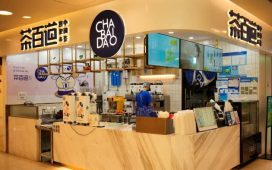In a written response to lawmakers’ questions on Wednesday, the government said the Tourism Board had invited industry professionals, celebrities and internet influencers, or so-called key opinion leaders (KOLs), to produce more than 330 short videos documenting their travel experience in Hong Kong.
The Culture, Sports and Tourism Bureau said the videos were aired on over 3,000 different platforms worldwide, reaching more than 200 million viewers.

More than 2,000 people were invited to the city and given personalised themed travel itineraries to “showcase the diverse tourism characteristics of Hong Kong” and encouraged to tell “good stories of the city through their first-hand experiences”.
They included Crazy Rich Asians actor Henry Golding, Japanese star Takeru Satoh and South Korean actor Jung Hae-in.
Hong Kong wants a slice of the Mideast-visitor pie, but is city ‘halal’ enough?
Hong Kong wants a slice of the Mideast-visitor pie, but is city ‘halal’ enough?
The board would continue to promote the city through themed campaigns, especially for mega events, in the coming year, the bureau said.
The bureau, however, did not reveal the amount of money spent on the campaign or the budget for a similar promotional drive in the coming year.
“The promotional efforts mentioned are integrated into the board’s various promotional activities, and it is difficult to quantify the specific budget expenditure for each activity,” it said.

Lawmaker Chan Hoi-yan, who had asked the bureau these questions, said she would continue to request a breakdown of funds from the government.
“I believe it is important for understanding the economic benefits these celebrities bring,” she said.
Chan also said she noticed that some of the influencers and celebrities had visited Michelin-starred restaurants or internationally renowned bars.
“These are places you can easily find online. Shouldn’t they be introducing visitors to less well-known, hidden spots?” she said, noting that in-depth local tours were what most visitors were looking for these days.
Hong Kong tourism sector hoping for 30% bump in visitors over ‘golden week’
Hong Kong tourism sector hoping for 30% bump in visitors over ‘golden week’
A “Hello Hong Kong Dance Challenge” was also launched on TikTok, the now separate international version of popular mainland Chinese social media platform Douyin, which has been unavailable in the city since 2020.
The bureau said the challenge attracted more than 1.2 million video submissions globally, and was attributed to helping the board gain an additional 300,000 followers on the platform.
The board earlier this month said it had signed a strategic partnership with popular mainland platform Xiaohongshu, or “Little Red Book”, to strengthen cooperation on cultural tourism promotion.
Financial Secretary Paul Chan Mo-po revealed in February in his latest budget that he had set aside HK$1.09 billion to boost tourism.
Most of the funds, about HK$971 million, would be given to the board to support promotional and development projects over the next three financial years.
Hong Kong’s leader urges businesses to get creative amid shifting spending habits
Hong Kong’s leader urges businesses to get creative amid shifting spending habits
Meanwhile, data compiled by the board showed Britain and Australia, both in the city’s top 10 inbound tourism markets in 2019, before the pandemic, dropped out of the list last year.
According to the statistics, 212,286 visited from Britain in 2023 compared with 518,378 in 2019. Similarly, 505,253 Australians arrived in 2019, but just 240,705 last year.
However, arrival numbers from Southeast Asian countries recovered well. Arrivals from the Philippines were back to 87 per cent of the 2019 figures.
The country was the city’s fourth top inbound tourism market last year, after the mainland, Macau and Taiwan. It was in seventh place five years ago.
Board executive director Dane Cheng Ting-yat and industry insiders previously noted the strong demand from Filipinos for theme parks such as Disneyland. Flights from the country to Hong Kong were also abundant compared with regional competitors such as Tokyo and Shanghai, contributing to the city’s popularity.
Long-distance flights, however, would still need time to fully recover, he said.











